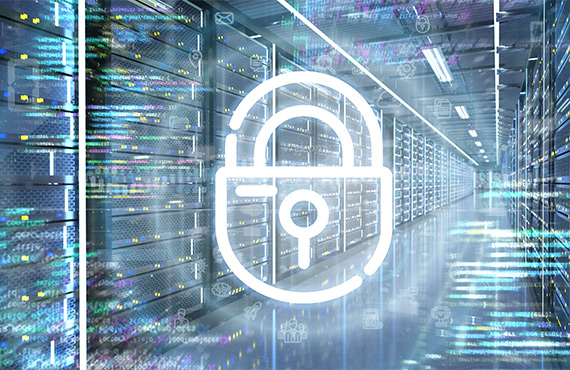
The rise of Industry 4.0 and the digital transformation of manufacturing have increased connectivity and efficiency. Yet, these advancements have also exposed industrial environments to more significant cybersecurity risks.
The convergence of operations technology (OT) and information technology (IT) has made industrial control systems (ICS) more vulnerable to cyber threats. Cyber threats can disrupt production and compromise safety.
High-profile attacks like TRITON and Industroyer have shown the sophistication of malicious actors targeting ICS vulnerabilities to infiltrate critical infrastructure. These incidents highlight the importance of prioritizing industrial cybersecurity.
As a result, it's crucial to install proactive monitoring. Also, use access controls, network segregation, and other vital strategies. This safeguards sensitive OT assets and data.
Cyber risks have significant operational, financial, and reputational consequences in today's interconnected world.
This blog post emphasizes the need for robust cybersecurity solutions for ICS and OT environments.
It explores the threat landscape, common vulnerabilities, and regulatory pressures. Most importantly, it provides insights into collaborating with experts. It also covers adopting an integrated, defense-in-depth approach. This approach encompasses people, processes, and technology.
OT/IT Convergence
Operational technology (OT) includes the hardware and software. It's used to oversee and regulate industrial equipment and physical processes. The manufacturing, energy, utilities, and transportation sectors use it.
This includes industrial control systems (ICS), supervisory control and data acquisition (SCADA) systems, distributed control systems (DCS), and programmable logic controllers (PLCs).
On the other hand, information technology (IT) refers to computing systems used for data-driven operations. This includes networking, data storage, and analytics. Historically, OT and IT systems have been separate. OT relies on specialized systems designed for reliability and uninterrupted operation.
Still, in recent years, we have seen an increased integration between OT and IT systems. Valuable insights drive this convergence. IT analytics use OT system data. It also comes from the ability to manage and track geographically dispersed assets. Additionally, it comes from cost savings achieved through shared infrastructure and standardized technologies.
While integration brings new capabilities, it also introduces cybersecurity risks. Many OT systems were not designed with security in mind. Someone may exploit their vulnerabilities. Connecting legacy OT devices to IP networks makes them susceptible to attacks from IT systems.
To bridge these two environments, organizations must conduct a careful risk assessment. They must also install purpose-built protections to prevent disruptions to critical operations. It is crucial to comprehensively understand the threats faced. Establish layered defenses tailored to the unique OT/IT infrastructure.
We've only just begun. The best parts are further down the page.

Threat Landscape
A changing landscape constantly threatens industrial environments. Attackers increasingly focus on critical infrastructure. Cyber attacks on industrial control systems (ICS) can cause significant disruptions and damage.
One notable example of an ICS attack is Stuxnet. It occurred in 2010 and targeted Iranian nuclear facilities.
This sophisticated malware infected programmable logic controllers. This caused malfunctioning centrifuges. The operators were tricked into believing everything was normal.
In 2017, the TRITON malware disrupted safety systems at a critical infrastructure facility in the Middle East.
TRITON was designed to disable Triconex Safety Instrumented System controllers. These controllers are crucial for monitoring conditions and preventing safety hazards.
These incidents highlight vulnerabilities in industrial environments. They also reveal the motivations of threat actors who target them.
Invariably, nation-states, hacktivists, and cybercriminals all pose risks. The convergence of IT and OT networks has made it easier to spread threats from office systems to production operations. Outdated devices have unpatched vulnerabilities. Attackers can gain access and move within the system

Vulnerability in ICS Environments
Industrial environments pose distinct vulnerabilities that malicious actors can exploit to disrupt operations. Many facilities still need to consider cybersecurity. They rely on outdated industrial control systems (ICS) designed.
These systems often use unique protocols and software. This makes updating or securing them difficult.
Moreover, industrial settings need more open physical access to help operations and maintenance. A vast area spreads machinery. This makes it difficult to restrict access or track all entry points. So, the risk of an attacker gaining physical access to manipulate a system increases.
Here are several vulnerabilities worth noting:
- Legacy systems are older ICS platforms and field devices. They lack modern security capabilities and operate on outdated, vulnerable software. It is often challenging to patch them.
- Proprietary protocols are custom communication protocols used in operational technology (OT) environments. They are rarely encrypted or authenticated. This leaves critical operational data susceptible to eavesdropping or manipulation.
- Large, open industrial facilities have many potential entry points. It's hard to track them continuously. This provides attackers with opportunities to tamper with equipment and connections.
These inherent vulnerabilities underscore the importance of implementing comprehensive security measures. We should tailor them to the unique requirements of ICS environments. Identifying and safeguarding any weak points is crucial for preserving production systems.
You won't want to miss this next section – it's where things start to get interesting.
Regulations and Compliance
It is crucial to focus on adherence to regulations and compliance standards. This protects industrial infrastructure.
You should follow several vital rules, including:
- The National Institute of Standards and Technology (NIST) publishes cybersecurity frameworks. NIST SP 800-82 is one of these, and it focuses on ICS security. These frameworks offer essential guidelines for establishing policies, procedures, and controls.
- The North American Electric Reliability Corporation (NERC) designed the Critical Infrastructure Protection (CIP) Reliability Standards for power grid assets. They aim to ensure the security of electricity generation and transmission systems.
- ISA/IEC 62443: The ISA and IEC 62443 standards outline procedures for implementing secure industrial automation and control systems. These standards cover various aspects, including risk management, patch management, audit controls, and more.
- ISO 27001 sets requirements for information security management systems. It provides a framework for managing cyber risks.
Compliance with these regulations and any other relevant ones is mandatory.
To ensure successful compliance, it is crucial to partner with experts in relevant regulations
Defense-in-Depth Security
Implementing defense-in-depth security is crucial for protecting industrial environments.
How?
The organization needs a layered cybersecurity model. This will safeguard the organization at different levels.
Network Segmentation
What about network segmentation?
Properly segmenting networks is a crucial aspect of defense-in-depth. This involves dividing the network into zones and placing firewalls between them. We should isolate critical systems, such as industrial control systems (ICS). We should place them in highly secure zones with restricted access.
In addition, this containment strategy helps prevent threats from spreading across the network.
Access Control
Effective access control through granular user permissions is essential. Role-based access control should limit account privileges. It should only provide what each user needs for their responsibilities.
Moreover, incorporating multifactor authentication adds an extra layer of security. It requires more credentials beyond a password.
Monitoring
Monitoring networks, systems, and user activity is vital for early threat detection. For instance, logs from firewalls, servers, ICS, and other sources provide valuable visibility. By utilizing analytics, organizations can identify anomalies indicating cyberattacks or insider risks.
And, promptly investigating alerts enables swift incident response.
Nonetheless, you can significantly enhance your cyber resilience in industrial operations. Adopt a layered approach that encompasses people, processes, and technology.

Partner with Experts in OT/ICS Cybersecurity
Securing operational technology and industrial control systems presents unique challenges. You may need help navigating them independently. OT and ICS environments involve intricate legacy systems, exclusive protocols, and specialized technologies. Most IT security professionals need to gain expertise in these areas.
The repercussions of a breach in these environments can be catastrophic. It can lead to safety risks, production shutdowns, and equipment damage. It can also result in the loss of sensitive data or intellectual property.
Instead of trying to create an in-house OT security program from scratch, organizations can save time, money, and headaches by collaborating with experienced specialists.
The right partners can offer managed services, technology integration, and incident response. Many plants need more in-house resources for ongoing support.
Act Now: Here's How to Get Started
As we have discussed before, industrial control systems (ICS) face significant threats. Specialized cybersecurity solutions are necessary. Legacy OT environments lack security considerations. IT solutions inadequately address ICS vulnerabilities. This further emphasizes the need.
This is where partnering with experts like Proconex becomes crucial.
We offer customized solutions that encompass people, processes, and technology. With our experience in OT cybersecurity, we can effectively safeguard your operations. We can also prevent costly downtime.
Contact Proconex today to start a discussion. Understand your infrastructure's unique security requirements by reaching out to them. Our experienced team is ready to collaborate with you on a cybersecurity program. It protects your industrial environment.
Prioritize ICS security now to safeguard your critical infrastructure.
Proconex's comprehensive solutions deliver the cyber resilience that industrial companies require.
Let's begin the conversation around how we can secure your operations.
Frequently Asked Questions
What are some common questions about industrial cybersecurity?
Industrial cybersecurity is a complex topic with many nuances. Here are some of the most frequently asked questions:
What is the difference between IT security and OT security?
IT security focuses on protecting data and systems, such as servers, computers, and networks. OT security addresses threats to industrial control systems. It also addresses threats to processes involved in manufacturing or critical infrastructure.
Why is OT security important?
OT environments contain sensitive equipment and processes crucial for operations and safety. A cyberattack could shut down production or even cause physical damage. Applying security measures helps mitigate risks.
What types of threats are concerning?
Malware, unpatched vulnerabilities, compromised credentials, and network intrusions pose major risks. Attackers could illegally access systems to steal data, disrupt operations, or cause accidents. We should also consider insider threats.
How can we start improving security?
We recommend starting with a risk assessment to identify vulnerabilities. Install security controls like network segmentation, monitoring systems, and access management. Train your personnel on best practices. Partner with experts in ICS security when possible.
What regulations apply to industrial security?
NERC CIP, ISA/IEC 62443, NIST CSF, ISO 27001, and others contain cybersecurity requirements, recommendations, and frameworks. Industrial environments are their target.
How much will it cost to install security measures?
Costs vary based on current risk levels and assets to protect. Some basic improvements, like training, may cost very little. Technology implementations need significant investment. Overall, the benefits tend to outweigh the costs.
Do you have other questions about securing critical infrastructure and industrial facilities?
Let us know!
Our experts can help answer your questions. We can also provide guidance on improving your cybersecurity posture.
